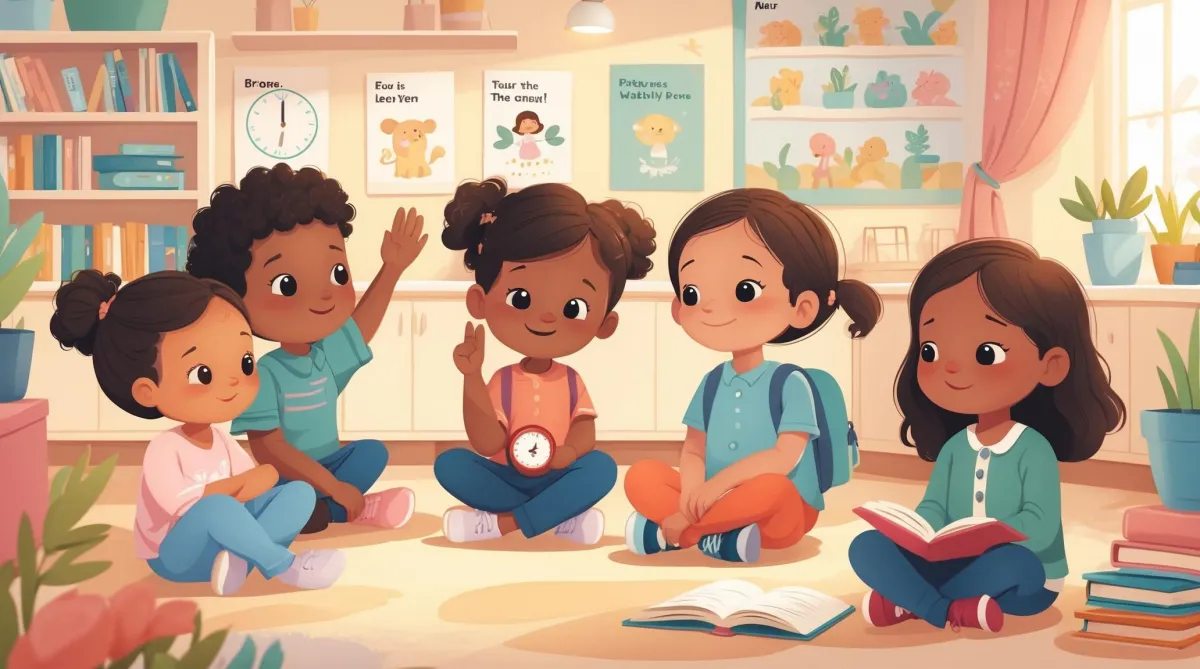
Teaching Respectful Waiting: Building Patience with Purpose in Young Learners

Teaching Respectful Waiting: Building Patience with Purpose in Young Learners
Learning to Wait is Learning to Feel
In a world that moves quickly, helping young children slow down and wait respectfully is one of the most powerful things we can do—not just for their behavior, but for their emotional growth.
At ChromaELA, we believe waiting isn’t just about obedience. It’s about self-regulation, empathy, and the ability to respect space and time—our own and others’. Waiting respectfully is an essential part of emotional literacy and a building block for lifelong learning.
Why Waiting Respectfully Matters
When children learn to wait with care and calm, they develop:
Impulse control
Empathy and perspective-taking
Emotional regulation
Social communication skills
These aren’t just classroom skills. They're life skills that shape how children relate to others, express their feelings, and manage challenges.
Why Waiting is Hard (and That’s Okay)
Young children aren’t born with patience. Their brains are still growing the pathways that manage big emotions and delayed gratification.
Here’s what they’re up against:
Lack of time awareness (“1 minute” feels like forever)
Strong emotions like frustration, boredom, or excitement
A desire for connection or attention they haven’t yet learned to regulate
That’s why we teach with compassion, not correction.
Tools That Help Children Learn to Wait
At ChromaELA, we integrate social-emotional tools into literacy moments, circle time, and transitions. You can, too.
Try these simple strategies:
1. Use Visual Timers & Cues
Children benefit from visualizing time. Use sand timers, digital countdowns, or “waiting cards.”
2. Teach “Calm Waiting” Routines
Practice what respectful waiting looks and feels like:
Still body
Quiet hands
Listening ears
Deep breathing
3. Model It with Language
Use phrases like: “I’m going to wait my turn to speak, just like you’re doing. That’s respectful.”
“We wait because everyone’s voice matters.”
4. Practice During Real Moments
Build in “waiting practice” during:
Turn-taking games
Group reading
Snack prep
Line transitions
Small, daily experiences lead to strong emotional habits.
Make It Visible: Visual Prompts & Role-Play
Bring waiting to life with:
Illustrated posters of “calm waiting” behaviors
Puppets modeling what not to do and how to fix it
Student-created “waiting journals” (Draw how you feel while you wait)
These tools allow students to see, feel, and own the skill.
Practice Makes Patience
Patience doesn’t grow overnight. But with consistency and care, children learn that respectful waiting isn't about being quiet—it's about being kind, thoughtful, and in control of themselves.
At ChromaELA, we celebrate every small step: every pause, every polite phrase, every deep breath a child takes instead of interrupting. These moments are proof that their hearts—and brains—are growing.

Infant Care
Nurturing and caring environment for your little one's growth.

Toddler Care
Nurturing growth and discovery in a safe, loving environment.

Preschool
Nurturing creativity and growth in a safe, engaging environment.
Ga Pre-K Lottery
Unlock educational opportunities with our Ga Pre-K Lottery program.
AfterSchool
Enriching and safe after-school care tailored to children's growth.
Kindergarden
Nurture young minds with personalized attention and engaging activities.
Testimonials
Our Parents love us
Here's some of what they had to say
My daughter has been going here for a year. She and we love it! The staff is very kind and helpful. They listen to my concerns and always help her and engage her with activities that fit her abilities instead of just her age! We have restricted diet; they work with us to accommodate her. Chroma has become our second family!
Khawla M.

My daughter loves it here. She loves all her teachers, she learns something new every day. We love the activities they provide our child with.
Jessica B.

